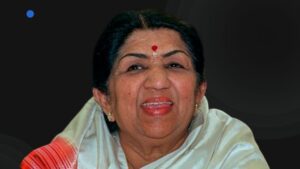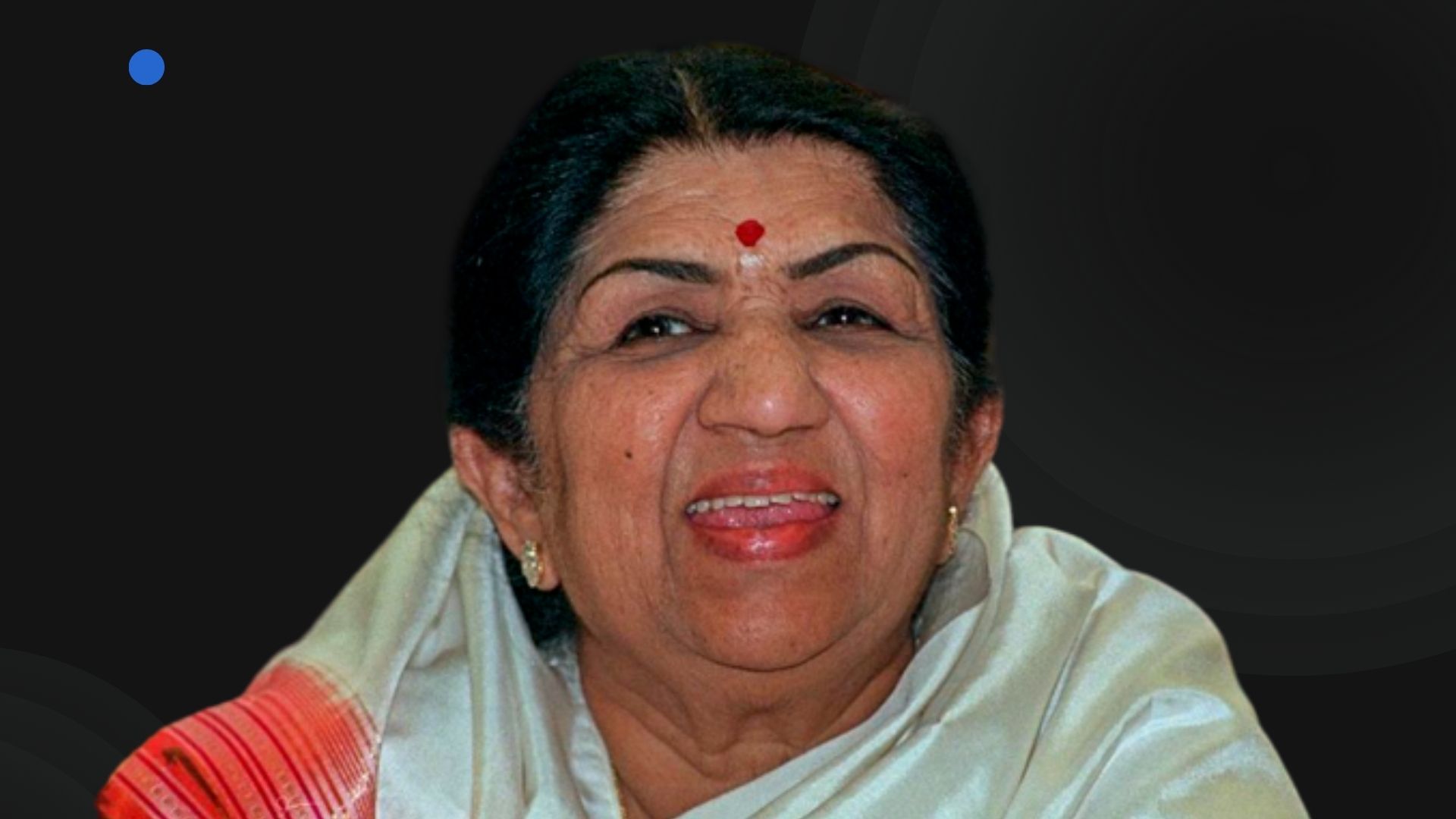Lata mangeshkar biography
Birthdate: September 28, 1929
Birthplace: Madhya Pradesh’s Indore
Shevanti Mangeshkar is the mother, and Deenanath Mangeshkar is the father.
Sisters: Hridaynath Mangeshkar, Asha Bhosle, Usha Mangeshkar, and Meena Khadikar
Working as a Playback Producer, Director of Music, Singer
Faith: Hinduism
Playback begins Career as a Singer: 1942
Approximately 50,000 songs in 36 languages total.
Nickname: India’s Nightingale
Approximate Net Worth: $10 million
Lata mangeshkar biography
Recognised as the “Nightingale of India,” Lata mangeshkar Biography, is a respected figure in the Hindi cinema business. Her parents were Deenanath and Shevanti Mangeshkar, and she was raised surrounded by music from a young age. She was born on September 28, 1929, in Indore, Madhya Pradesh. Born into a Brahmin family in Maharashtra, Lata had four siblings: Meena, Asha, Hridaynath, and Usha. She was the oldest of them all. Her musical path was greatly influenced by her father, Pandit Deenanath Mangeshkar, a theatre actor and classical singer.

Early Life & Childhood
Lata’s father renamed her after a character in one of his plays after she had been called Hema before. When she was five years old, she made her stage debut in her father’s musical dramas. She did not go to school, but she learned music from great teachers like Amanat Khan, Pandit Tulsidas Sharma, and Aman Ali Khan Saheb. Lata was influenced by the renowned K.L. Saigal, and her love of music began at a young age.
At the tender age of 13, tragedy struck when her father went unexpectedly, leaving little Lata with the burden of providing for her family. Her strong devotion to music remained unwavering despite the difficulties.
Career
Lata’s career as a playback singer began in 1942, the year her father passed away. After facing some initial difficulties, she persisted and, with the help of family friend Vinayak Damodar Karnataki, managed to get her first chance in Marathi and Hindi films. Her first Marathi song, “NaachuYaa Gade, Khelu Saari Mani Haus Bhaari,” featured her lovely voice. Her Hindi debut, “Mata Ek Sapoot Ki Duniya Badal De Tu,” came shortly after.
She had a sea change in her career when she moved to Bombay in 1945, but it was also a time of rejection because of her unusual voice. But Lata regained her footing under the guidance of music director Ghulam Haider, turning in blockbusters like “Ayega Anewala” and “Dil Mera Toda, Mujhe Kahin Ka Na Chhora.”
Her association with distinguished music directors catapulted her into the spotlight, yielding noteworthy contributions to critically acclaimed films such as “Baiju Bawra,” “Mother India,” and “Devdas.” Her first Filmfare Award for “Aaja Re Pardesi” in 1958 solidified her reputation as a playback singing icon, and recognition quickly followed.

Producer & Director of Music
Lata branched out from her career as a playback vocalist and became a composer for Marathi films like “Ram Ram Pavhane” and “Sadhi Manase.” Producing films such as “Vaadal” and “Jhaanjhar,” she demonstrated her versatility.
Honours and Awards
Lata received multiple awards for her contributions to Indian cinema, including the Bharat Ratna, Padma Bhushan, and Padma Vibhushan. Her reputation transcends national boundaries, as evidenced by her status as the most recorded artist by Guinness World Records.
Conflicts
Lata faced controversy despite her stellar career, most notably a falling out with S.D. Burman and arguments with Mohammed Rafi regarding royalties. Moreover, disagreements surfaced over her Guinness Record, highlighting the nuances of her extraordinary achievement.
In a brief
The life of Lata Mangeshkar is a testament to her talent, perseverance, and unshakable commitment to her art. Her melodies, as India’s Nightingale, have left a lasting impression on the history of Indian cinema and continue to reverberate beyond decades.
